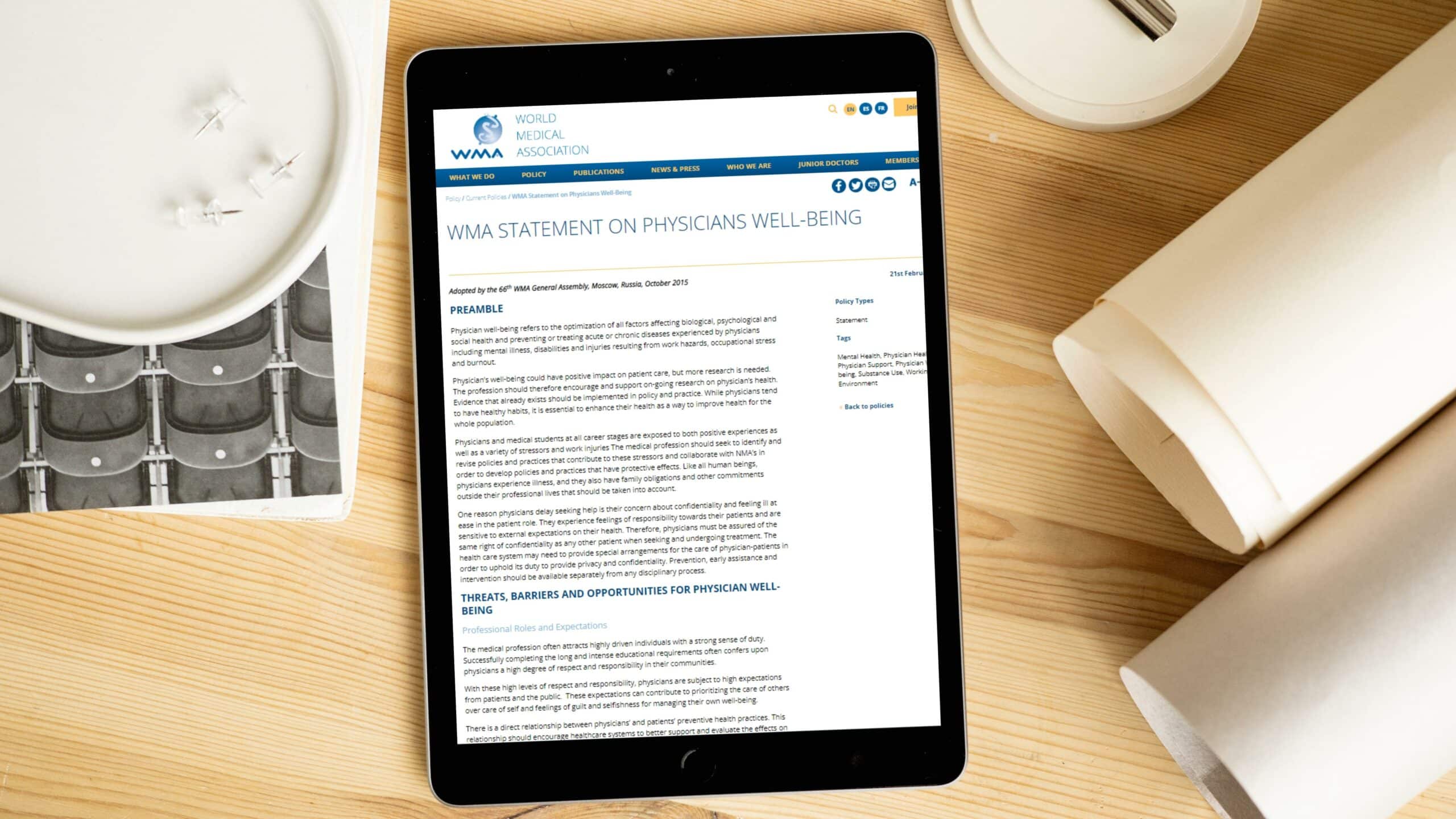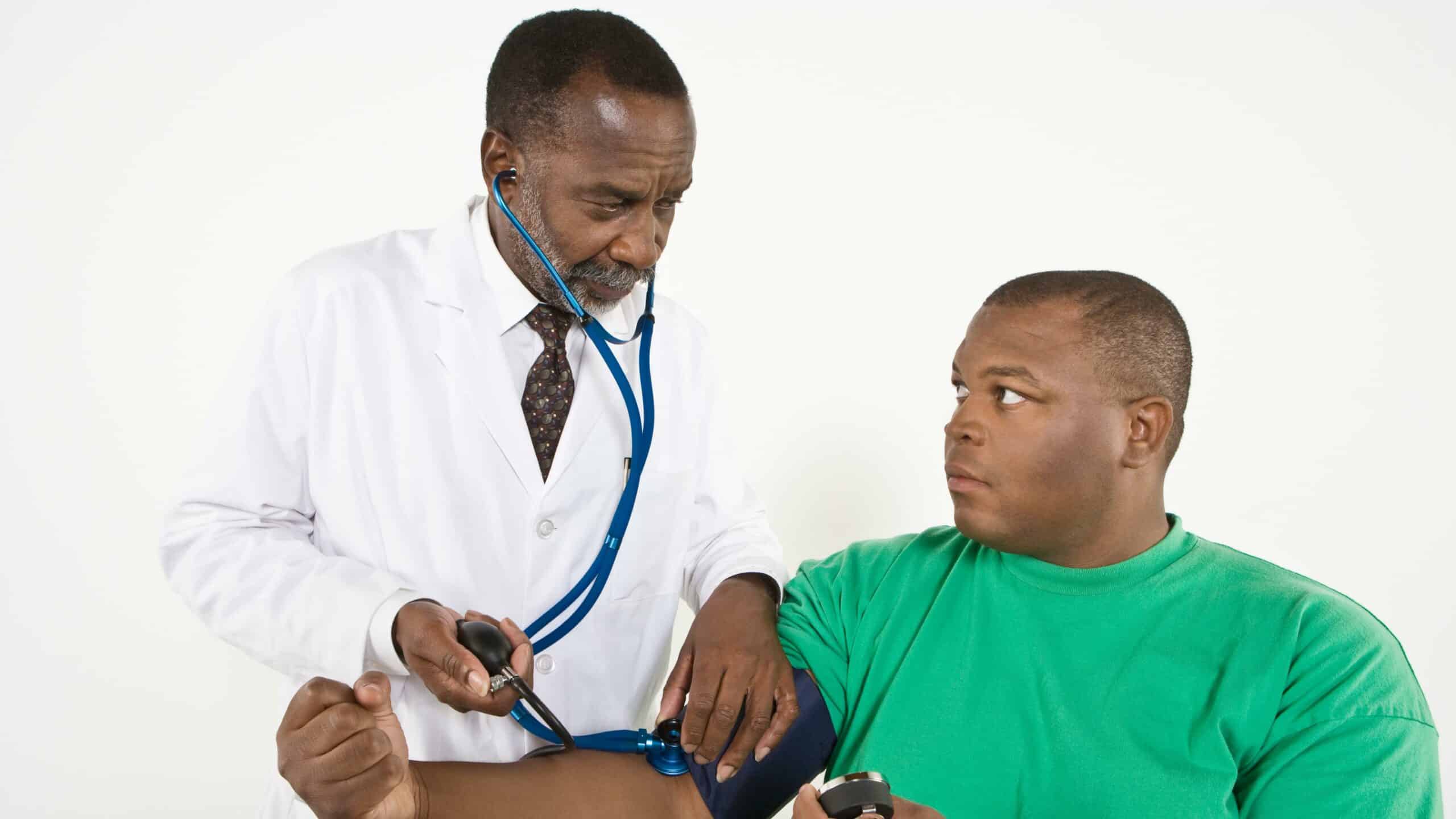For over 15 years, the Addiction Training for Health Professionals (ATHP) program has responded to some of the world’s biggest health challenges affecting addiction. In this blog, we will highlight an example where a significant ATHP research output informed policy development and how this demonstrates the value and impact of the research program.
ATHP was founded in 2005. It focuses primarily on facilitating positive health outcomes by building capacity in addiction medicine for physicians in training and practice. This is done by developing training, education, initiatives, interventions, and research, and by influencing policy development. Over the years, ATHP has become one of the leading American and global providers of Addiction Medicine education and conducts research that supports and guides the use of this education.

One of ATHP’s most significant research outputs has been the Healthy Doc = Healthy Patient initiative, a novel educational approach that shows a correlation between physicians’ health and that of their patients. Healthy Doc = Healthy Patient was invented in 1992 by Dr. Erica Frank, the former Research Director (and current Research Advisor) of ATHP. This approach seeks to improve the health of both physicians and patients by promoting healthy lifestyle choices and providing resources for doctors to make healthier choices. Since 2005, there have been 59 peer-reviewed publications about Healthy Doc = Healthy Patient, and the HD=HP principle “has been demonstrated in more than 100 peer-reviewed publications and has had uptake from distinguished individual medical institutions” (APTP Summary Report, 2021). This uptake includes major initiatives at institutions including Harvard and Stanford, and at the American, British, and Canadian Medical Associations.
An especially noteworthy use of the Healthy Doc = Healthy Patient principle is demonstrated in the World Medical Association’s (WMA) 2015 Statement on Physicians’ Well-Being. The WMA, a global organization of physicians that seeks to ensure the highest ethical standards in medical care, called for ongoing support for research on physicians’ health, and policies and practices to be implemented in this regard. The statement, which was heavily influenced by the Healthy Doc = Healthy Patient principle, highlighted the critical importance of physician well-being and how this can impact patient care. The WMA outlined “physician well-being” as:
“… the optimization of all factors affecting biological, psychological and social health and preventing or treating acute or chronic diseases experienced by physicians including mental illness, disabilities and injuries resulting from work hazards, occupational stress and burnout” (WMA, 2017).

In its statement, the WMA identified three main threats, barriers, and opportunities for physicians’ well-being. These are professional roles and expectations, work environment, and illness. The WMA also highlights that substance use disorders are a global problem, and physicians can play a key role in prevention and treatment.
This reference to the Healthy Doc = Healthy Patient principle led to the first seven (of twelve) WMA recommendations listed here to National Medical Associations, to recognize and address the topic at the policy level. These recommendations are:
- In partnership with medical schools and workplaces, NMAs recognize their obligation to provide education at all levels about physician well-being. NMAs should collaboratively promote research to establish best practices that promote physician health and to determine the impact of physician well-being on patient care.
- Physician well-being should be supported and provided within and outside the workplace. Support may include but is not limited to referral to medical treatment, counselling, support networks, recognized physician health programs [a synonym for drug rehabilitation, further at #5], occupational rehabilitation and primary prevention programs including resiliency training, healthy lifestyles and case management.
- NMAs should recognize the strong and consistent link between physicians’ and patients’ personal health practices, providing yet another critically important reason for health systems to promote physician health.
- Physician health programs can help all physicians to proactively help themselves via prevention strategies and can assist physicians who are ill via assessment, referral to treatment and follow-up. Programs and resources to help promote positive psychological health should be available to all physicians. Early identification, intervention and special arrangements for the care of physician-patients should be available to protect the health of physicians. Fostering a supportive and accepting culture is critical to successful early referral and intervention.
- Physicians at risk for abuse of alcohol or drugs should have access to appropriate confidential medical treatment and comprehensive professional support. NMAs should promote programs that help physicians re-enter medical practice with appropriate ongoing supervision at the completion of their treatment programs. More research should be conducted to determine best practices in preventing substance abuse among physicians and physicians in postgraduate education.
- Physicians have the right to working conditions that help limit the risk of burnout and empower them to care for their personal health by balancing their professional medical commitments and their private lives and responsibilities. Optimal working conditions include a safe and reasonable maximum number of consecutive and total working hours, adequate rest between shifts and appropriate number of non-working days. Relevant organizations should constructively address professional autonomy and work-life balance problems and involve physicians in making decisions about their work lives. Working conditions must not put the safety of patients or physicians at risk, and ultimately physicians should be engaged in establishing optimal workplace conditions.
- Workplaces should promote conditions conducive to healthy lifestyles, including access to healthy food choices, exercise, nutrition counselling and support for smoking cessation.
- In partnership with medical schools and workplaces, NMAs recognize their obligation to provide education at all levels about physician well-being. NMAs should collaboratively promote research to establish best practices that promote physician health and to determine the impact of physician well-being on patient care.

These recommendations have outlined various support systems that should be in place to help promote physician health, the ways that “physician health programs” (historically a euphemism for Substance Use Disorder programs for physicians and medical students) can help, and the importance of creating a supportive culture in the medical workplace. The development of these World Medical Association policies was directly based on Frank’s and ATHP’s Healthy Doc = Healthy Patient publications illustrating the global impact and influence of our program’s education research.
The Healthy Doctor = Healthy Patient initiative continues to have a global impact on policy, implementation, and research and points the way to interventions that reduce substance use among physicians and the patient populations they serve. For example, an upcoming blog will highlight Frank’s workshop on “106 Years of Physician Health Research” at the October 2022 AMA/BMA/CMA-sponsored International Conference on Physician Health. HD=HP’s success is due, in part, to its simple but effective approach: by promoting healthy lifestyle choices among physicians, the probability of improving the health of patients and populations is greater, and this improves the quality of care delivered.
For more information about ATHP’s work towards improving physician well-being and patient outcomes, have a look at these courses.
Aduke Williams
Author
References
Addiction Professionals Training Program. (2021.) APTP Summary Report.
World Medical Association. (2017, February 21). WMA Statement On Physicians Well-Being: Adopted by the 66th WMA General Assembly, Moscow, Russia, October 2015 https://www.wma.net/policies-post/wma-statement-on-physicians-well-being/

